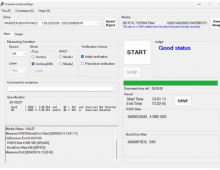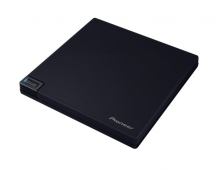DVD Technical Guide
15. Audio Format - Page 5
Review Pages
2. Concepts and Structure of the DVD Format
3. The Future of DVD
4. Design Concept of the Physical Specification
5. Features of the DVD Physical Specification
6. The DVD Data Format
7. Read-Only Disc File Format
8. Video Format
9. Video Format - Page 2
10. Video Format - Page 3
11. Audio Format
12. Audio Format - Page 2
13. Audio Format - Page 3
14. Audio Format - Page 4
15. Audio Format - Page 5
16. DVD-R and DVD-RW
17. DVD-R and DVD-RW - Page 2
18. DVD-R and DVD-RW - Page 3
19. DVD-R and DVD-RW - Page 4
20. DVD-RAM
21. DVD-RAM - Page 2
22. DVD-RAM - Page 3
23. DVD-RAM - Page 4

The DVD-Audio specification defines a hierarchical structure and units of access, with the focus of continuing with the same style of operations used with familiar previous audio discs. As in the past, one song corresponds to one track. However, since one 12 cm single-layer disc holds 4.7 GB and is thus has the capacity to hold multiple CD albums, it is possible to record many tracks on a single DVD. To improve accessability, the DVD-Audio specification combines multiple tracks which should be played sequentially into a newly-defined access unit called a Group. A Group is a logical unit, and can form a large structure of one or more sequential Audio Titles (ATT) as a single playback unit. This logical unit can be played continuously with a single operation.
Audio Title is a logical structure which is equivalent to a Title in DVD-Video, and is comprised of the presentation data to be played and the navigation data which determine the playback sequence. Unlike its DVD-Video counterpart, Audio Title is a unit of access that the user will not be concerned with. DVD-Audio does not allow complex playback sequences. However, adopting the Audio Title and Group as logical structures allows the construction of large works containing multiple units of content with differing parameters, such as different encoding methods (Linear PCM or Packed PCM), sampling frequencies, bit depths, multi-channel configurations, with or without video data, etc. Up to nine Groups can be contained within a Volume, and up to 99 ATTs can be contained within each Group. However, the maximum number of ATTs per disc Volume is also limited to 99.
Group and Track numbers are the units accessible by users from their DVD-Audio players. Further, a smaller, optional access unit called an Index is also defined. An Index is a playback unit which may be comprised of one or more cells. The Index was defined primarily to specify numbers of logical units within a track. Index numbers start from 1 within each Track.
Review Pages
2. Concepts and Structure of the DVD Format
3. The Future of DVD
4. Design Concept of the Physical Specification
5. Features of the DVD Physical Specification
6. The DVD Data Format
7. Read-Only Disc File Format
8. Video Format
9. Video Format - Page 2
10. Video Format - Page 3
11. Audio Format
12. Audio Format - Page 2
13. Audio Format - Page 3
14. Audio Format - Page 4
15. Audio Format - Page 5
16. DVD-R and DVD-RW
17. DVD-R and DVD-RW - Page 2
18. DVD-R and DVD-RW - Page 3
19. DVD-R and DVD-RW - Page 4
20. DVD-RAM
21. DVD-RAM - Page 2
22. DVD-RAM - Page 3
23. DVD-RAM - Page 4





















